In the midst of a major expansion, WestJet looks to grow its partnership with Delta Air Lines – Photo: John Jamieson
On December 6th, 2017, WestJet and Delta announced they would be expanding their partnership into a cross-border joint venture. The agreement, which should be finalized later this year, signifies WestJet’s arrival on the global stage. Once a Southwest lookalike, WestJet has become a hybrid carrier capable of challenging Air Canada.
Their success may have come at a price. Over the past few years, WestJet increased their operational costs and complexity in pursuing Air Canada. On the heels of their first quarterly loss in 13 years, WestJet is hoping 2019 brings clearer skies. However, with complicated labor contracts to sort out, the airline seems to be heading for more turbulence. Their joint venture with Delta could be the key to regaining some lost momentum.
Before I delve into the complexities of the airlines’ joint venture, it’s worth understanding how far WestJet has come in its 22 years.
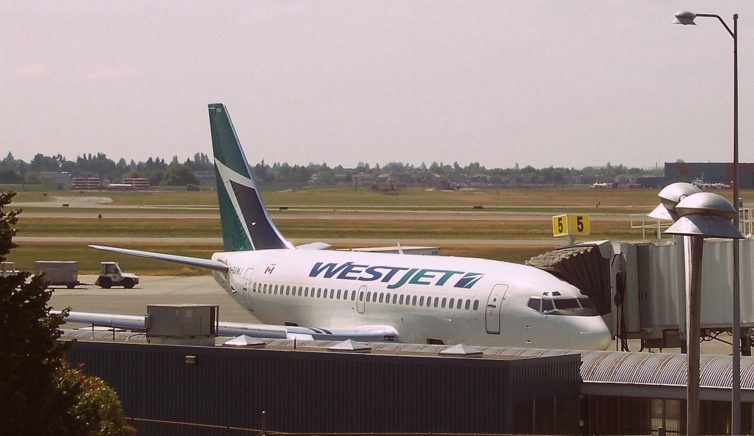
In 1996, WestJet operated three 737-200s between Calgary, Vancouver, Edmonton, Kelowna, and Winnipeg.
Low-Cost Origins:
Back in 1996, WestJet’s business model was simple: Low-Cost Flights with Friendly Service. Just like Southwest, WestJet initially focused its efforts on establishing a small network (five cities) with frequent connections. The airline chose to operate second-hand Boeing 737-200s. While this was largely due to their low operating costs, the aircraft was also easy to source. With their headquarters based in Calgary, WestJet’s primary competition came from another local carrier, Canadian Airlines International.
Buoyed by a strong corporate culture and passenger experience, WestJet quickly began tapping into their competitors’ market share. After withstanding predatory pricing tactics from Air Canada and Canadian Airlines, WestJet established a cult following in Western Canada. Following Canadian’s demise, WestJet took advantage of the chaos and established itself as the de-facto #2 in Canada.
When Air Canada entered Chapter 11 bankruptcy protection in the early 2000s, WestJet began expanding rapidly. In 2002 they added Toronto and London (the city in Eastern Canada). Two years later, they began seasonal flights to the United States. And finally, following the retirement of their original 737-200s, they expanded further internationally and launched WestJet Vacations. Things were moving into place.
When the carrier celebrated its 14th anniversary in 2010, WestJet had taken over Canadian’s spot in Canada’s aviation duopoly. From a domestic standpoint, the airline was present in all of the important markets. However, WestJet’s executive team had set their eyes on more distant outposts. As they prepared to announce a new CEO, it was clear the airline showed no signs of slowing down.
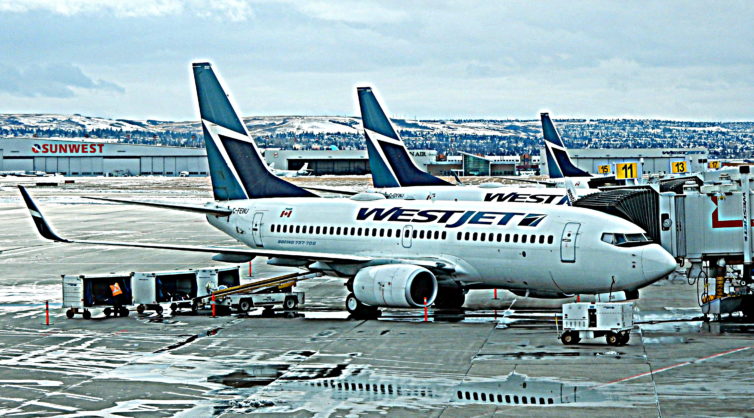
The 737-700 soon became the new workhorse in WestJet’s fleet offering versatility and range – Photo: John Jamieson
The Man with the Plan:
Rapid growth was nothing new for Gregg Saretsky. In his time at Canadian Airlines, Saretsky had overseen subsidiary consolidation and fleet diversification, as the airline aggressively expanded its international network. In all the confusion, Canadian struggled to manage its expanding route network and their multiple domestic subsidiaries. Canadian quickly began losing money, eventually folding and merging with Air Canada.
At WestJet, there were no subsidiaries to manage and only one type of aircraft to maintain: Boeing’s 737 NextGen (-600/-700/-800).
Saretsky also knew that domestically, WestJet had a competitive edge over Air Canada. When Air Canada tried launching their own low-cost carriers in 2002 (Zip and Tango), WestJet stood firm. As the brands battled each other, AC’s low-cost subsidiaries only served to damage the flag carrier’s own image.
WestJet was in a fairly stable position in the North American market; however, a problem was starting to emerge.
Bonus: WestJet Just Keeps Adding Complexity, And Somehow It Works via Brett Snyder
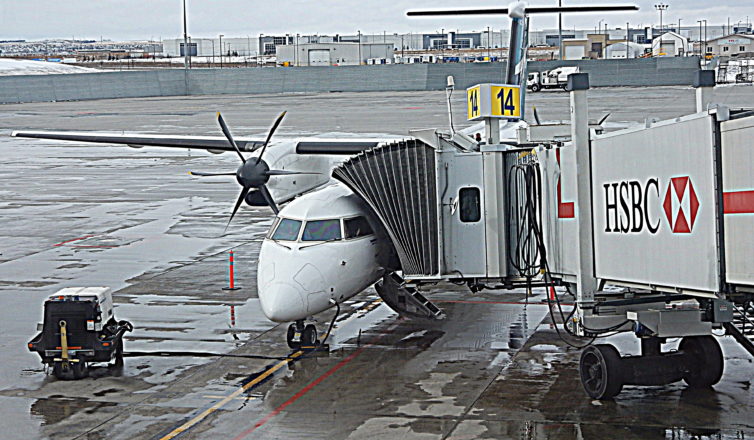
WestJet Q400 parked at YYC – Photo: John Jamieson
Setting a Tone for the Future
Incredible as it may seem given Canada’s size, WestJet was starting to run out of places to send their 737s. Despite having some fleet flexibility, WestJet was unable to compete with Air Canada Express and its regional network. Not even the smallest member of their fleet, the 737-600, could do the trick. The problem was simple, the solution seemed obvious, but the execution would be challenging.
Outside of the provincial capitals and large urban areas (Toronto, Montreal, Vancouver) most cities in Canada serve low-density markets and have short runways. This represented a hard combination for WestJet to satisfy. They realized if they were to continue growing in Canada they’d need their own regional subsidiary, one capable of serving the smaller markets.
After finalizing an order with Bombardier for 20 Q400s (with additional options), WestJet was ready to launch Encore in the summer of 2013. With major hubs spaced across Canada, WestJet could finally develop a hub and spoke network to rival Air Canada.
Having taken on Air Canada domestically, it was time to bring it internationally!
Bonus: WestJet Encore Celebrates Inaugural Q400 Flight from Calgary
Long-Haul Outlook
Only a year after launching Encore, WestJet announced that they would be expanding into Europe. When the airline launched seasonal service between St. Johns, Newfoundland and Dublin, Ireland (operated by their Boeing 737-700 fleet), the airline was testing the limit of its narrow-body fleet. If the airline was going to expand further internationally, they would need to add a widebody aircraft.
After exploring many different options, WestJet chose to purchase four second-hand 767-300s from Qantas. After adding a “WestJet-themed” maple leaf to the traditional WestJet livery, the 767s were ready to connect Western Canada with the European market.
Bonus: Updated-WestJet Gets a New Logo…Really!
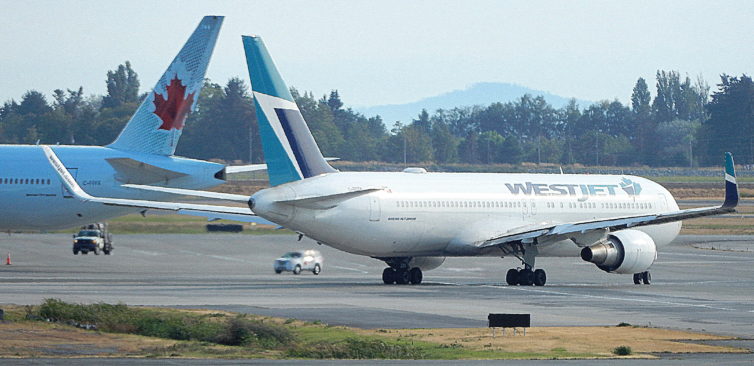
WestJet’s new 787-9s, which debuted in 2019, are far more fuel efficient than their aging 767s (pictured) – Photo: John Jamieson
Dreamliner Delivery
In 2017, when WestJet announced their intention to order ten 787-9 Dreamliners, the world took notice. The order, which includes options for an additional 10 aircraft, brought the airline out of the low-cost realm into the land of the legacy carriers. The Dreamliner has revolutionized long-haul travel, in particular, the viability of long-thin routes. For WestJet, the aircraft offers the right mix of premium seating with cost-saving efficiencies.
BONUS: Dreamliners Going the Distance: New Ultra Long-Haul Routes For Boeing’s 787
With a snazzy international business class and a new livery, the Dreamliners instantly raised WestJet’s profile. When the airline took delivery of Fin 901 on January 17th, CEO Ed Sims and other WestJet employees were on hand to celebrate their new flagship.
As we move into the summer season, WestJet has begun putting pen to paper on the newest chapter in their history. Their European expansion looks set to continue, and there are suggestions the airline will explore Latin America and Asia. Looking further down the road, WestJet’s relationship with Delta gives them a seat at one of the more profitable global “tables”, but it also leaves them with a question. What does their joint venture mean in the context of their existing partnerships?
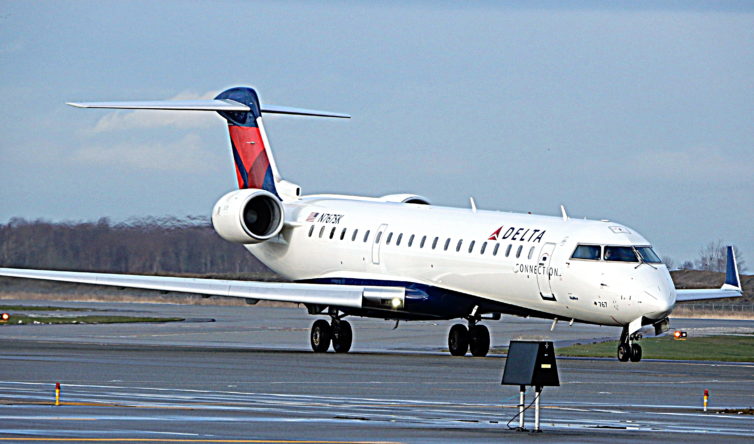
As one of the founding members, Delta has considerable leverage within the SkyTeam Alliance – Photo: John Jamieson
Note: before delving too deep into this topic, it’s worth having a basic understanding of Interlining and Codesharing. As I’ll be using these terms while discussing the WestJet/Delta partnership, I’ve provided some examples to help explain the concepts better.
Airline Partnerships 101:
- Codesharing:
- This occurs when two or more airlines agree to place their “code” on the same flight. Codesharing effectively allows airlines to advertise the full reach of their network.
- Example: American Airlines 6218 (Vancouver to London-Heathrow) operated by British Airways.
- Customers who have frequent flyer memberships generally prefer booking through an airline they have status with.
- Bonus: Mileage Runs: Why Do People Fly Just for Miles? LEG 2 (this should outline some of the benefits associated with Frequent Flyer memberships and how codesharing is useful for those passengers)
- Interline agreements:
- Interlining, allows passengers to travel with multiple airlines on a single itinerary.
- Interlining passengers can print boarding passes, and check baggage, through to their final destination. They don’t need to check in between flights.
- Interline agreements also allow airlines to book you on another carrier if your flight is canceled.
Pursuing Partnerships
Back when WestJet was a low-cost carrier, the airline was reluctant to commit to premium partnerships. While the airline eventually realized the revenue that could be gained via interlining and codesharing, WestJet never joined one of the major alliances. Now that WestJet has its own metal for international flights, it’s possible that the airline will look to condense its partnerships down to a particular group.
Bonus: What’s next for WestJet [1/2] via EHviation (explores WestJet’s current partnerships in greater detail)
With Air Canada tied to the Star Alliance group, WestJet was largely locked out of any partnerships or connections; apart from the odd interline agreement, WestJet largely partnered with airlines in the Oneworld or SkyTeam alliance. When I glanced at WestJet’s Airline Partners page on their website, it was easy to get a sense of the direction they were heading with their partnerships. It seemed only a matter of time until the airline explored the possibility of securing a long-term partner in Europe or Asia.
By strengthening ties with Delta, WestJet has the opportunity to build other connections in SkyTeam. While commenting on the carriers’ relationship Ed Sims, WestJet’s CEO, hinted at future agreements with Delta’s SkyTeam partners Air France-KLM and Korean Air. Considering Delta’s global influence and position in SkyTeam, it makes sense for WestJet to join the carrier’s other JVs.
Bonus: WestJet eyes transpacific joint ventures via Flight Global
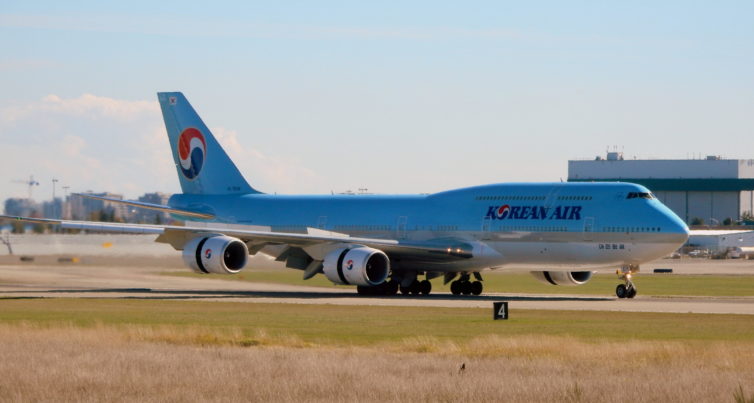
Korean Air and WestJet could be close to “tying the knot” across the Pacific – Photo: John Jamieson
Transitioning towards a Joint Venture
So, now that we know the airlines are forming a “JV”, what can we expect the agreement to look like?
A joint venture effectively allows WestJet and Delta to operate as a single carrier between the U.S. and Canada. If the agreement is approved by the United States Department of Justice, the airlines will be able to expand their interline partnership (network size) and share their collective profits and costs on all transborder flights.
According to FlightGlobal, the airlines are planning on adding new markets and increasing frequency on their popular routes. In October, the airlines announced plans to launch, or add frequency on, 20 routes between Canada and the United States. At the time of writing, the only route in line with the carrier’s joint expansion is WestJet’s daily connection to Atlanta from its hub in Calgary.
Bonus: WestJet to offer non-stop Atlanta service from Calgary via CISION
With more routes on the horizon, it’s been suggested that some of Delta’s smaller hubs – Seattle, Salt Lake City, etc. – may benefit from new trans-border routes. That being said, it’s likely that the bulk of the new routes will serve the carrier’s main hubs.
The only other additional detail worth noting from the JV is Swoop’s involvement in the agreement. As a low-cost subsidiary of WestJet, it makes sense that the carrier was included, however, the very nature of the airline left me with some questions. When I interviewed Swoop President Steven Greenway in January, he explained that while Swoop would avoid interlining, the airline would still benefit from the partnership.
Note: look for my full interview with Steven in a later article.
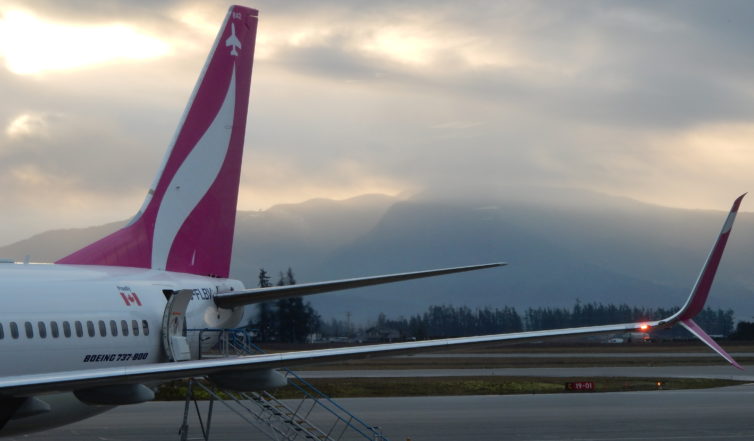
Swoop President Steven Greenway was able to confirm, during our interview, that the airline will be included in the JV – Photo: John Jamieson
ONEX Purchase and Final Remarks
I was going to leave the story there, however, it would be wrong to leave out my take on WestJet’s recent purchase by Canadian private equity firm ONEX. The $5 billion dollar purchase sent shockwaves through the Canadian aviation industry, or rather it did, right up until Air Canada announced that it was considering purchasing Air Transat.
The ONEX purchase provides WestJet with a large amount of cash and wiped a significant amount of debt off the airline’s books. With everything set to remain in place, as far as their corporate identity and headquarters, WestJet has been given a huge opportunity to flourish in Canada’s turbulent skies. As a Canadian AvGeek, I’ll certainly be keeping a close eye on WestJet as they continue their upward progress.
Comments are closed here.
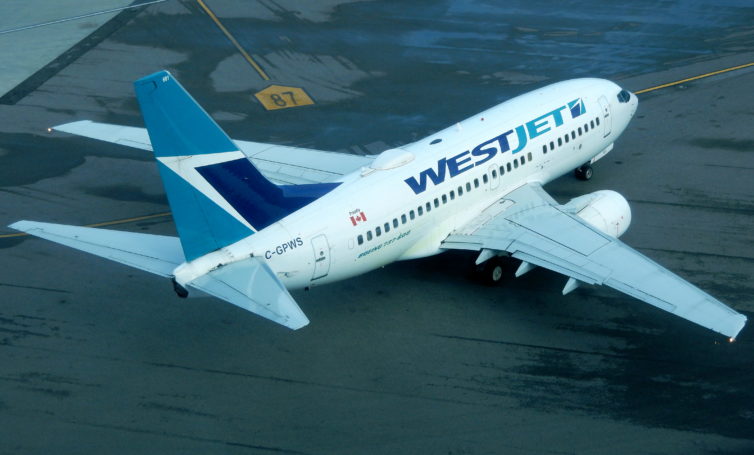
Very good article. Keep up the good work!
Interesting history. The parallels with Virgin Australia (starting as a LCC, becoming the other party of a domestic duopoly following Ansett’s demise, developing into more of a full service carrier, expanding to both regional centres and overseas, and developing partnerships outside of a major alliance [so far]) are striking.
Your article is flawed. Saretsky didn”t join Westjet until 2009. And wasn”t CEO until 2010. So it wasn”t he who battled the AC lo-cost upstarts ZIP and Tango. That was Steve Smith.
I believe you’ll find that in leading up to the “Man with a Plan” section I indicate that they were celebrating their 14th anniversary in 2010 and preparing to announce a new CEO (Saretsky).
However, you are right to comment that Steve Smith was CEO around the time of Zip and Tango, I was merely suggesting that Saretsky would have noticed that WestJet came out on top while those carriers were battling it out in the Low-Cost sector.
I apologize for not making that as clear as it could have been.
Thank you Peter! I’m glad you enjoyed it.
Fiji Airways may be flying to Vancouver BC. I would chose them over WestJet or Air Canada anytime.